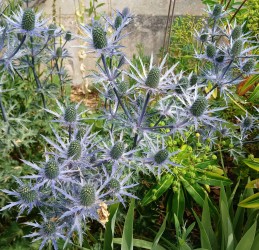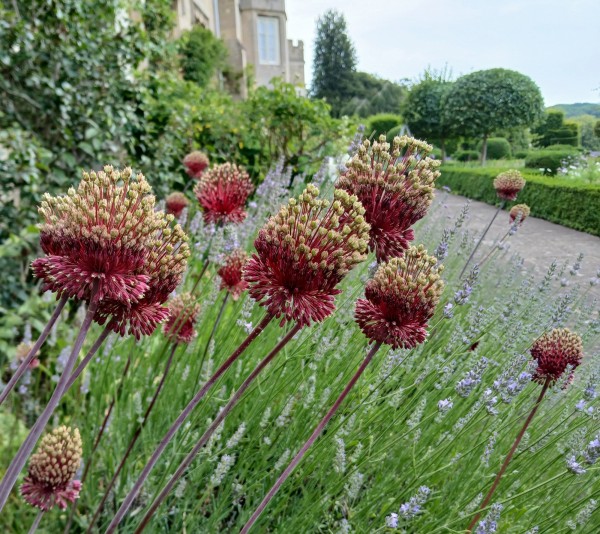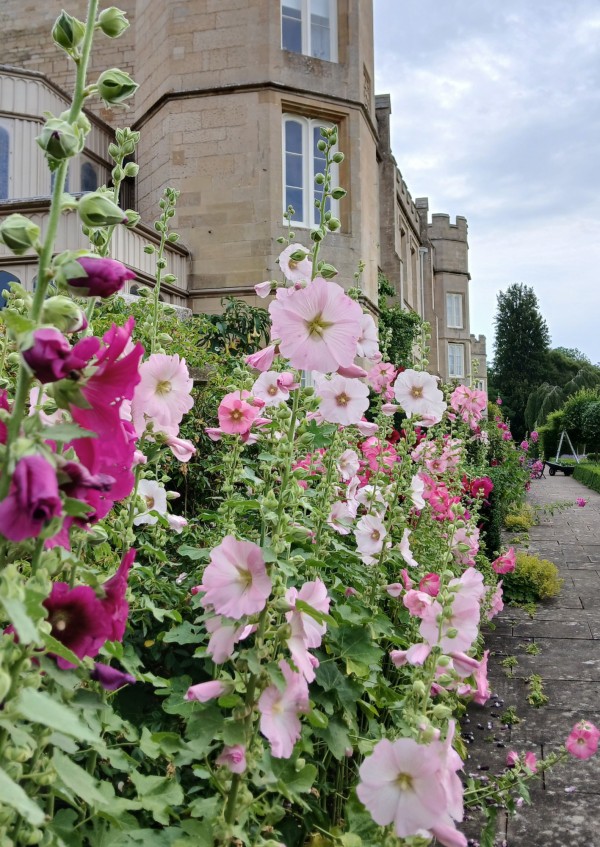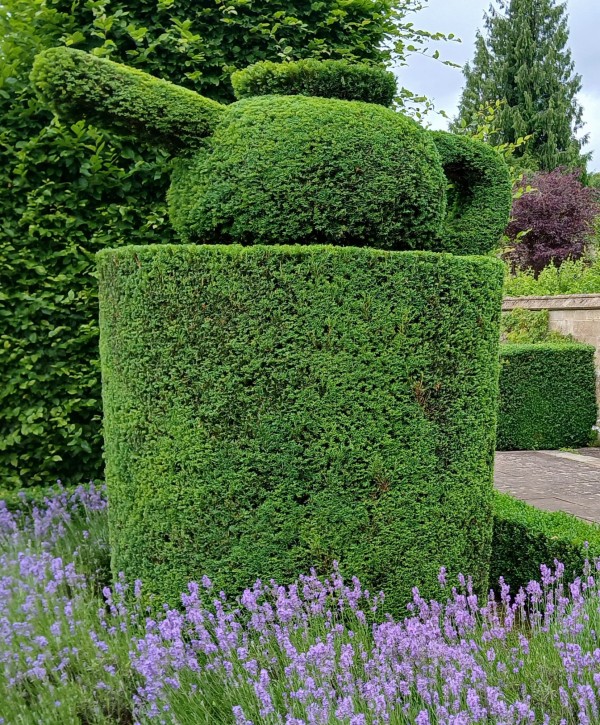Garden Blog - July 2025
Caribbean calypso sensation, Alphonsus Celestine Edmund Cassell MBE, otherwise known as Arrow, could easily have been describing this summer thus far with his hit party tune ‘Hot Hot Hot’. It has been a ‘scorcher’ as they say, and as I write, it shows no signs of cooling down or delivering any significant amount of rain. As a result, our lawns can look tired, and borders flagging.
There are, however, a number of gallant and hardy souls that cock a snook at such hardship, positively thriving on adversity, and keeping colour in our borders throughout the long summer months. Of particular note in the gardens here at Deene Park are Erygiums, with their architectural appearance, and spiny, metallic-blue flower heads; towering hollyhocks, with spikes of large flowers in shades from purest white, through yellow, peach, pink, red, and maroon; and finally, Allium ‘Red Mohican’, a striking ornamental bulb, known for its unique, maroon-red flower heads with tiny white tips, which resemble the mohawk hairstyle of yesteryear, held three foot height on stiff, wiry stems. Another favourite for dry conditions are lavenders. Beloved by butterflies and bees, which seem to have had a particularly good year if their presence on our lavenders is anything to go by, this perennial scented shrub, native to the Mediterranean basin, has been cultivated in British gardens since the Romans invaded and introduced us to the art of horticulture, nearly two thousand years ago.
The English word lavender came into being in the thirteenth century, and is generally thought to originate from the Old French word ‘lavandre’, which is itself derived from the Latin ‘lavare’ meaning to wash, referring to the use of lavender infusions for bathing. Interestingly, the word lavatory has the same Latin entymology.
Lavenders, and the others mentioned so far, require plenty of sun to thrive, so what about shady dry conditions? Though more difficult, plants such as dainty, spring flowering epimediums will do well; as does Euphorbia amygdaloides var. robbiae, known more commonly as wood spurge, with its umbels of chartreuse flowers. above rosettes of glossy, dark green leaves. For summer colour, Geranium macrorrhizum, the rock crane’s-bill, is a hardy herbaceous perennial with scented foliage, that produces a mat of soft pink flowers. If all else fails, there is always ivy and periwinkle, which are nigh on indestructible, and great for ground cover.
Meanwhile, pots and urns, planted up at the end of May are going great guns right now, but of course require regular watering and feeding to keep then at their very best. That said, the hard work is well worth it as they provide plentiful colour, and a thoroughly tropical feel, whatever the weather. Lately, our potted dahlias have also joined the fray, being fully in bloom now, and are decorating the seating area for our Tea Room.
Elsewhere, we are getting on with clipping our yew topiary teapots, hornbeam hedges, and Rose Garden beech sentinels. However, we decided last year to defer clipping our box hedges until the winter, as summer clipping leaves them looking somewhat scorched by strong sunlight. Although it is recommended to choose an overcast and preferably damp day to clip box and avoid scorch, we find that it tends to make little if any difference. Though less sharply formal at this time of year, by clipping over winter, we now have box hedges that retain a lush and deep green colour throughout the entire summer. This is an experiment that has proved well worth pursuing for a fresher looking summer garden.
Until next month, happy gardening.
 |
 |
 |
 |
| Erygiums | Allium 'Red Mohican' | Hollyhocks | Topiary teapots and lavender |

